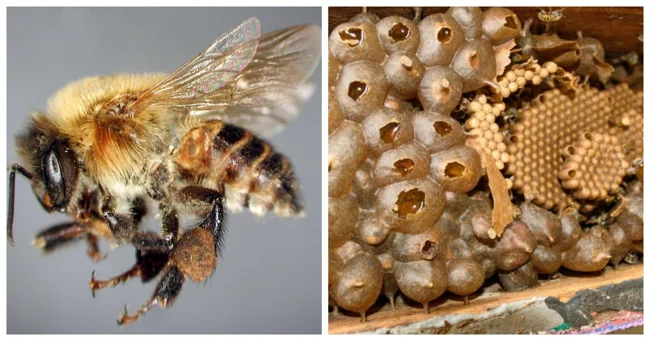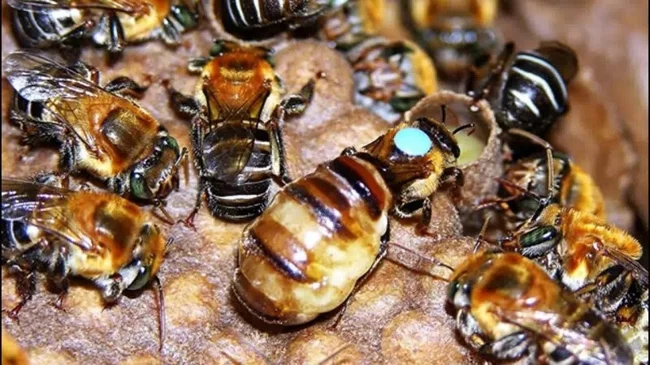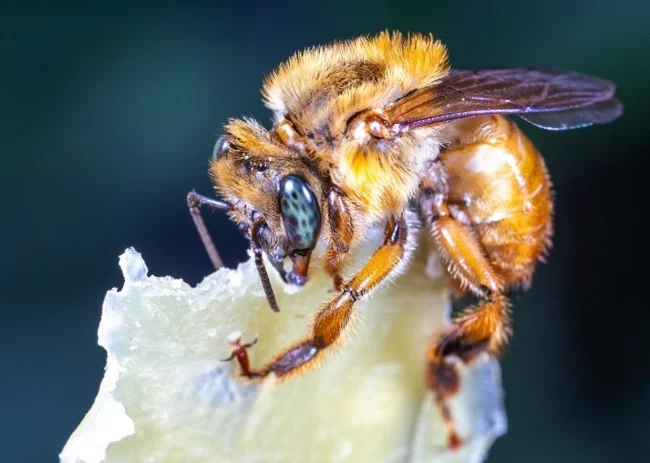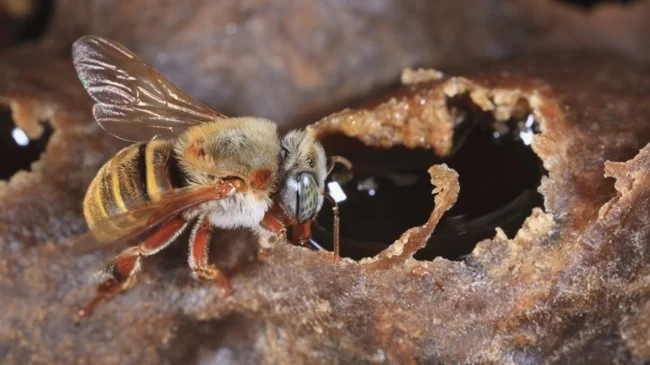Compassionate, ruthless, four-lane: amazing melipons (6 photos + 1 video)
The bee is honey. And there is also danger, because hardworking minke whales can bite, albeit at the cost of their lives. And if some tolerate bites normally, then in others the body’s reaction can be completely unpredictable, even leading to Quincke’s edema. 
Now, if bees didn’t have a sting... It turns out that such creatures exist. These are Melipons - a genus of bees Meliponini of the Apidae family. Their sting is as reduced as possible, and they protect themselves from external aggressors with the help of mandibles and odorous liquids. 
Melipons live in tropical and subtropical zones of the Earth. Entomologists believe that these bees appeared about 200 million years ago. But one should not think that insects are completely defenseless in the face of danger. They have learned to defend themselves quite effectively, collectively attacking aggressors and using an odorous liquid against them, which also burns.
The structure of the hive and life 
In their natural environment, bees make their home in hollows or abandoned anthills. The building materials are wax, propolis, clay and tree resin.
Unlike their stinging cousins, these yellow-striped ones store honey and pollen in barrels, which are made from a mixture of wax and propolis. The cells are arranged vertically, look exotic, resembling the houses of some mythical creatures. 
But when it comes to protection, insects show miracles of ingenuity. First of all, this is a narrow entrance to the nest. Bees can only enter there one at a time. And there is always a gatekeeper on duty at the entrance.
He intercepts every little thing on his own, and when larger enemies try to attack, he calls on his brothers, or rather sisters, for help.
One of the varieties - resin bees protect nests from ants who like to sneak in without an invitation, with the help of resin: they roll small balls, and the aggressors simply stick to them. 
Australian stingless bees have gone even further - they have mastered the technique of mummification. Straight from the ancient Egyptians to the world of insects! They learned to cover the bodies of beetles attacking a hive with a special mixture of resin, dust and wax. The composition dries out, and the attackers lose the ability to eat and move, truly turning into mummies. 
It’s a pity that the habitat of these wonderful creatures is limited. After all, they are very hardworking, and also peaceful: in their natural environment they get along calmly next to people. It is not for nothing that one of the varieties of melipons - Melipona beecheii - was very revered by the Mayan people. And the wise Solomon himself said: “Go to the bee, lazy man, and learn from her! Go, open her hive, marvel at how beautiful and clean it is, what order!”
